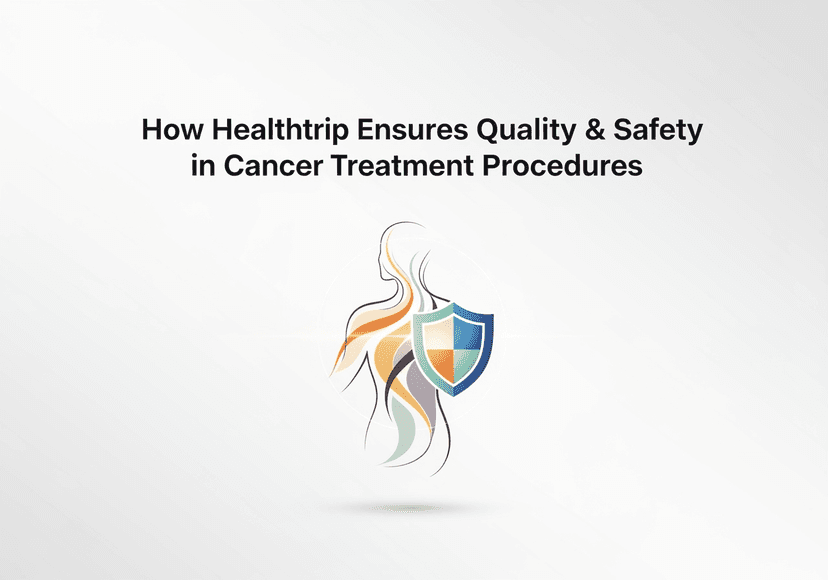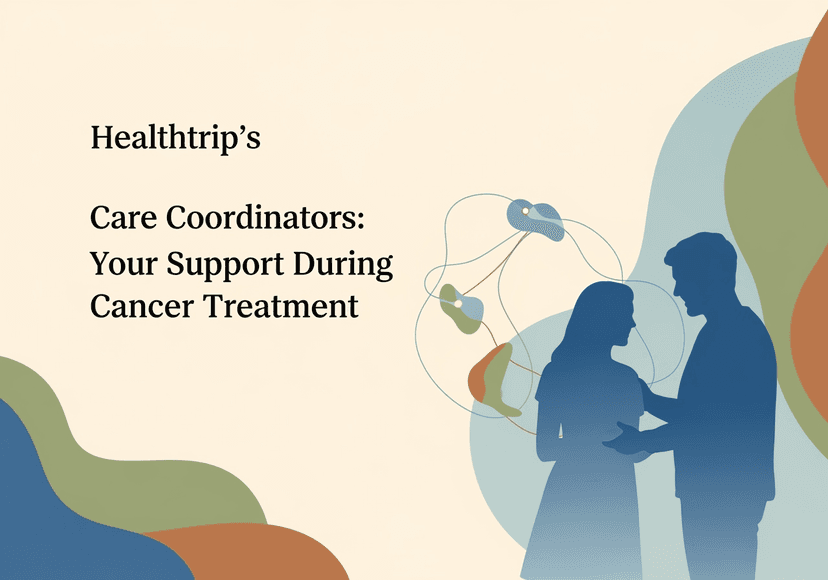
Nasopharyngeal Cancer: Symptoms, Diagnosis, and Treatment Strategies
26 Oct, 2023
 Healthtrip Team
Healthtrip TeamNasopharyngeal cancer
Most popular procedures in India
Types of Nasopharyngeal cancer
1. Squamous Cell Carcinoma
Wellness Treatments
Give yourself the time to relax
Lowest Prices Guaranteed!

Lowest Prices Guaranteed!
Squamous cell carcinoma is the most common type of nasopharyngeal cancer, accounting for the majority of cases. This cancer originates in the flat, thin cells lining the nasopharynx. It tends to grow slowly, and while it can be aggressive, early detection significantly improves treatment outcomes. Squamous cell carcinoma may cause symptoms such as nasal congestion, earaches, and blood-tinged saliva.
2. Lymphoepithelioma
Lymphoepithelioma is a less common but distinct subtype of nasopharyngeal cancer. This type is characterized by undifferentiated cancer cells surrounded by a dense lymphoid tissue infiltrate. Lymphoepithelioma is often associated with a better prognosis compared to squamous cell carcinoma. It is noteworthy for its strong association with the Epstein-Barr virus (EBV). The symptoms and signs of lymphoepithelioma are similar to other nasopharyngeal cancers, including nasal congestion and persistent headaches.
Symptoms and Signs of Nasopharyngeal cancer
1. Nasal Congestion
Nasal congestion, a common symptom of nasopharyngeal cancer, occurs when the malignant growth obstructs the nasal passages. Patients may experience persistent stuffiness or a feeling of blockage in the nose, which can contribute to difficulty breathing through the nostrils.
2. Blood-tinged Saliva
The presence of blood-tinged saliva is a concerning sign associated with nasopharyngeal cancer. As the tumor progresses, it can cause damage to blood vessels, leading to bleeding. This may manifest as blood in the saliva or coughed up blood, a condition known as hemoptysis.
3. Persistent Headaches
Frequent and persistent headaches are a symptom often reported by individuals with nasopharyngeal cancer. These headaches can result from the tumor's impact on surrounding structures, causing increased pressure within the head. The location and intensity of the headaches may vary depending on the extent and location of the cancer.
4. Earaches
Earaches are another common symptom, particularly when the cancer affects the Eustachian tube, which connects the middle ear to the back of the throat. The growth of the tumor can lead to ear pain or discomfort, and in some cases, hearing loss.
5. Neck Lumps
The development of lumps or masses in the neck is a significant sign of advanced nasopharyngeal cancer. Enlarged lymph nodes occur as the cancer spreads to nearby tissues. These palpable lumps may be painless but are indicative of the disease's progression and the potential involvement of adjacent structures.
Causes of Nasopharyngeal cancer
1. Epstein-Barr Virus (EBV) Infection
Nasopharyngeal cancer is strongly associated with the Epstein-Barr virus (EBV), a common virus of the herpes family. In individuals with nasopharyngeal cancer, the virus may persist in the cells of the nasopharynx, contributing to the development of cancerous cells. EBV infection is considered a major risk factor, particularly in regions where the virus is prevalent.
2. Genetic Factors
Genetic factors play a role in the susceptibility to nasopharyngeal cancer. Individuals with a family history of the disease may have an increased risk. Specific genetic mutations or variations may contribute to the development of nasopharyngeal cancer, although the interplay between genetics and environmental factors is complex and not fully understood.
3. Environmental Factors (e.g., exposure to certain chemicals)
Exposure to certain environmental factors, such as specific chemicals, may increase the risk of nasopharyngeal cancer. Occupational exposure to substances like formaldehyde and wood dust has been suggested as potential risk factors. Additionally, environmental factors such as air pollution and consumption of preserved or salted foods have been implicated in the development of nasopharyngeal cancer, particularly in high-incidence regions.
Diagnosis of Nasopharyngeal cancer
1. Nasopharyngoscopy
Nasopharyngoscopy is a key diagnostic procedure for evaluating nasopharyngeal cancer. During this examination, a thin, flexible tube with a light and camera (endoscope) is inserted through the nostril to visualize the nasopharynx. This allows the healthcare provider to directly inspect the tumor's location, size, and characteristics, helping in the initial assessment and planning of further diagnostic and treatment measures.
2. Imaging (CT, MRI)
Imaging studies, such as computed tomography (CT) scans and magnetic resonance imaging (MRI), are essential for providing detailed images of the nasopharynx and surrounding structures. These imaging techniques help determine the extent of the cancer, including the size of the tumor and whether it has spread to nearby lymph nodes or other areas. CT scans provide detailed cross-sectional images, while MRI scans offer enhanced visualization of soft tissues.
3. Biopsy
A biopsy is a definitive diagnostic procedure for confirming the presence of cancerous cells. During a biopsy, they take a small tissue sample from the suspected tumor for microscopic examination. This allows pathologists to identify the type of cancer, assess its grade and stage, and determine the most appropriate course of treatment. In the case of nasopharyngeal cancer, a biopsy may be obtained during the nasopharyngoscopy or through a fine needle aspiration (FNA) if there are enlarged lymph nodes.
Accurate diagnosis through these methods is crucial for developing a personalized treatment plan and determining the stage of the cancer, which guides the healthcare team in providing the most effective and targeted interventions for the patient.
Treatment of Nasopharyngeal cancer
1. Radiation Therapy
Radiation therapy is a primary treatment modality for nasopharyngeal cancer. High-energy beams, such as X-rays or protons, are directed at the cancerous cells to destroy them or prevent their growth. External beam radiation is commonly used, precisely targeting the nasopharyngeal region. This treatment is effective for localized tumors and is often combined with other therapeutic approaches.
2. Chemotherapy
Chemotherapy involves the use of drugs to target and destroy cancer cells throughout the body. It is commonly used in conjunction with radiation therapy in a treatment approach known as chemoradiation. Chemotherapy is particularly valuable for treating nasopharyngeal cancer that has spread to other parts of the body. The drugs may be administered orally or intravenously, and the specific regimen depends on the stage and type of cancer.
3. Surgery (in some cases)
Surgical intervention may be considered for certain cases of nasopharyngeal cancer. However, due to the intricate location of the nasopharynx and its proximity to critical structures, surgery is often reserved for specific situations, such as early-stage tumors or cases where other treatments have not been successful. Surgical procedures may involve removing the tumor or, in more extensive cases, parts of the nasopharynx.
4. Immunotherapy
Immunotherapy is a promising and evolving treatment for nasopharyngeal cancer. This approach harnesses the body's immune system to target and eliminate cancer cells. Immune checkpoint inhibitors, a type of immunotherapy, may be used to block signals that cancer cells use to evade the immune system. While still an area of ongoing research, immunotherapy holds potential for improving treatment outcomes, especially in recurrent or advanced cases.
Risk Factors
1. Genetic Predisposition: Individuals with a genetic predisposition may have an increased risk of developing nasopharyngeal cancer, highlighting the importance of understanding and monitoring familial risk factors.
2. Smoking and Alcohol Use: Engaging in smoking and excessive alcohol consumption are identified risk factors, emphasizing the need for lifestyle modifications to mitigate these avoidable contributors to nasopharyngeal cancer.
3. Geographic Factors (More Common in Certain Regions): Nasopharyngeal cancer is more prevalent in specific geographic regions, underscoring the influence of environmental factors and suggesting a need for heightened awareness and screening in these areas.
Complications of Nasopharyngeal cancer
1. Spread to Nearby Structures: Nasopharyngeal cancer's invasion of neighboring areas can hinder breathing and disrupt normal swallowing, posing challenges to respiratory and digestive functions.
2. Impaired Function (e.g., Hearing Loss): Proximity to ear structures may lead to Eustachian tube dysfunction, resulting in hearing loss, impacting communication and overall quality of life.
3. Speech and Swallowing Challenges: In advanced stages, nasopharyngeal cancer can affect vocal and swallowing functions, causing difficulties in articulation and ingestion, significantly impacting daily life.
4. Cranial Nerve Involvement: Advanced cancer stages may involve cranial nerves, manifesting as facial numbness or double vision, emphasizing the diverse neurological complications associated with the disease.
How to prevent Nasopharyngeal cancer?
1. EBV Vaccination: Getting vaccinated against the Epstein-Barr virus (EBV) is a preventive measure, as EBV infection is closely linked to the development of nasopharyngeal cancer.
2, Avoidance of Known Risk Factors (e.g., Smoking): Actively avoiding known risk factors, such as smoking, significantly reduces the likelihood of developing nasopharyngeal cancer, emphasizing the importance of lifestyle modifications for prevention.
Final thoughts
Nasopharyngeal cancer presents complex challenges, encompassing complications like spread to nearby structures and hearing loss. Prevention through strategies like EBV vaccination and lifestyle changes is pivotal. Awareness of genetic predisposition and regional factors further informs risk assessment. Early detection remains key, holding promise for a future where proactive measures make nasopharyngeal cancer not only treatable but preventable.
Related Blogs

How Healthtrip Ensures Quality & Safety in Cancer Treatment Procedures
Detailed guide on cancer treatment, featuring doctors, hospitals, risks, recovery,

End-to-End Logistics for Cancer Treatment with Healthtrip's Support
Detailed guide on cancer treatment, featuring doctors, hospitals, risks, recovery,

Healthtrip's Care Coordinators: Your Support During Cancer Treatment
Detailed guide on cancer treatment, featuring doctors, hospitals, risks, recovery,

Healthtrip's Care Coordinators: Your Support During Cancer Treatment
Detailed guide on cancer treatment, featuring doctors, hospitals, risks, recovery,

Top 5 Indian Hospitals for Cancer Treatment
Detailed guide on cancer treatment, featuring doctors, hospitals, risks, recovery,

Post-Cancer Treatment Diet and Lifestyle Tips
Detailed guide on cancer treatment, featuring doctors, hospitals, risks, recovery,










